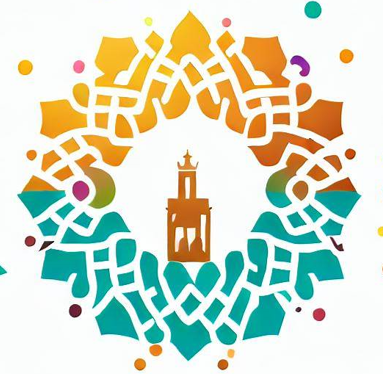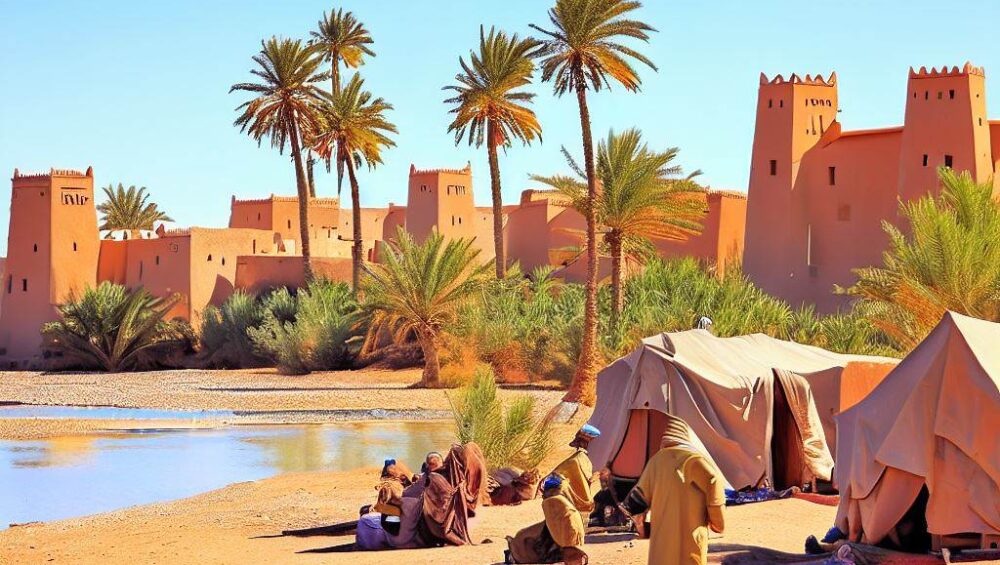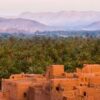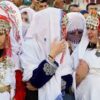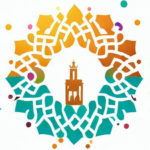Moroccan nomads, also known as Tuaregs or Sahrawis, are a Berber people of the Sahara desert. With a nomadic spirit, their traditional lifestyle keeps them on the move in search of resources to satisfy their needs and those of their livestock. They are above all breeders of camels, goats, and sheep. Their most important capital is livestock, without which they would have no chance of subsisting. They get milk as well as meat and leather from their cattle. Livestock is also their main currency that they use when they need to barter for other resources.
The Tuareg identity has always been linked to survival: survival in a hostile desert environment that is their ancestral homeland. They have two tools that help them cope with the continuous threats of hunger and inclement weather. The tents, made up of a cable-stayed wooden frame covered with different types of fabrics, such as animal hair or rugs, are light and triangular. They provide shelter as well as protection from the wind and sand. They are also quite mobile lending themselves to the nomads’ continuous search for water and pasture ground.
This impressive yet harsh lifestyle represents one of the most interesting and extraordinary aspects of Morocco. In the desert tracks from Tafraoute Ait-Atta to Taouz, along the Algerian border, hundreds of families live in migrant pace, following their animals in search for food and water². Water is the most important thing in the life of nomads. The nearest water well can be hours away from their camp.
While living as a nomad in Sahara Desert, your life is simple. Most objects found on an authentic nomad camp are of great utility. Basic kitchen utensils are used to cook and prepare food like meat tajine, fava bean soup and bread made in the oven. During the season of great abundance of food for animals, goats produce a lot of milk. Cheese is then dried out in the sun in order to be preserved and carried away. Dried cheese lasts for a long period of time before being eaten. It is a perfect way of preserving dairy in the desert.
